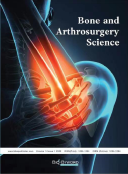Abstract
Type of study: Retrospective study. Objectives: To classify and analyze the morphological patterns of vertebral body fractures and report the clinical results. Summary of literature review: There have not been many reports on the classification of vertebral body fractures and treatment results, and it remains a matter of debate. Materials and methods: Among 107 patients diagnosed with an axis fracture from 2005 to 2019, 53 patients with fracture involving the vertebral body were selected. After the exclusion of 9 patients with a history of cervical spine surgery or who were lost to follow-up, 44 consecutive patients were enrolled in this retrospective study. Patients were classified into 5 groups (coronal, sagittal, transverse, avulsion, and complex) according to the main fracture line. The demographic data, injury mechanism, discoligamentous injury, combined injury, neurological symptoms, and clinical treatment results were analyzed. Results: Patients’ average age was 61.7 years (range, 25–81 years). 24 patients were male and 20 were female. The average follow-up period was 14.2 months (range, 7–33 months). The coronal, sagittal, transverse, avulsion, and complex groups contained 5, 5,8, 7, and 19 patients, respectively. Six patients were injured by slip-down accidents, 12 patients by falling height, and 26 patients by traffic accidents. Eighteen patients were presented with a discoligamentous injury. Twenty-five patients showed a combination of fractures of cervical vertebrae and bones. Thirteen patients presented neurological symptoms. 16 patients were treated with a neck collar and 28 patients were treated with a halo-vest. Two patients eventually required surgical fusion because union was not achieved with conservative management. In the final follow-up, all neurological symptoms were resolved; however, 4 patients still complained of a mild tingling sensation in the upper extremity. Pin site infection occurred in 3 patients who were treated with a halo-vest, but it was controlled after antibiotic administration. Conclusion: Vertebral body fractures accounted for almost 50% of axis fractures in this study. Vertebral body fractures can be classified into 5 groups (coronal, sagittal, transverse, avulsion, and complex) according to the morphological pattern. Non-operative management can be a reasonable treatment option with good clinical results and bone union.
References
Passias PG, Poorman GW, Segreto FA, et al., 2018, Traumatic Fractures of the Cervical Spine: Analysis of Changes in Incidence, Cause, Concurrent Injuries, and Complications Among 488,262 Patients from 2005 to 2013. World Neurosurg, 110: e427–e37. https://www.doi.org/10.1016/j.wneu.2017.11.011
Pryputniewicz DM, Hadley MN, 2010, Axis Fractures. Neurosurgery, 66(3 Suppl): 68–82. https://www.doi.org/10.1227/01.Neu.0000366118.21964.A8
Hirschmann MT, Konala P, Amsler F, et al., 2011, The Position and Orientation of Total Knee Replacement Components: A Comparison of Conventional Radiographs, Transverse 2D-CT Slices and 3D-CT Reconstruction. J Bone Joint Surg Br, 93(5): 629–633. https://www.doi.org/10.1302/0301-620x.93b5.25893
Pearson AM, Martin BI, Lindsey M, et al., 2016, C2 Vertebral Fractures in the Medicare Population: Incidence, Outcomes, and Costs. J Bone Joint Surg Am, 98(6): 449–456. https://www.doi.org/10.2106/JBJS.O.00468
Seybold EA, Bayley JC, 1998, Functional Outcome of Surgically and Conservatively Managed Dens Fractures. Spine (Phila Pa 1976), 23(17): 1837–1845. https://www.doi.org/10.1097/00007632-199809010-00006
Girardo M, Rava A, Gargiulo G, et al., 2018, Clinical and Radiological Union Rate Evaluation of Type 2 Odontoid Fractures: A Comparison Between Anterior Screw Fixation and Halo Vest in Elderly Patients. J Craniovertebr Junction Spine, 9(4): 254–259. https://www.doi.org/10.4103/jcvjs.JCVJS_93_18
Murphy H, Schroeder GD, Shi WJ, et al., 2017, Management of Hangman’s Fractures: A Systematic Review. J Orthop Trauma. 31(Suppl 4): S90–S95. https://www.doi.org/10.1097/BOT.0000000000000952
Anderson LD, D’Alonzo RT, 1974, Fractures of the Odontoid Process of the Axis. J Bone Joint Surg Am. 56(8): 1663–1674.
Benzel EC, Hart BL, Ball PA, et al., 1994, Fractures of the C-2vertebral body. J Neurosurg, 81(2): 206–212. https://www.doi.org/10.3171/jns.1994.81.2.0206
Fujimura Y, Nishi Y, Kobayashi K, 1996, Classification and Treatment of Axis Body Fractures. J Orthop Trauma, 10(8): 536–540. https://www.doi.org/10.1097/00005131-199611000-00005
Koller H, Acosta F, Forstner R, et al., 2009, C2-Fractures: Part II. A Morphometrical Analysis of Computerized Atlantoaxial Motion, Anatomical Alignment and Related Clinical Outcomes. Eur Spine J, 18(8): 1135–1153. https://www.doi.org/10.1007/s00586-009-0901-4
Radovanovic I, Urquhart JC, Rasoulinejad P, et al., 2017, Patterns of C-2 Fracture in the Elderly: Comparison of Etiology, Treatment, and Mortality Among Specific Fracture Types. J Neurosurg Spine. 27(5): 494–500. https://www.doi.org/10.3171/2017.3.SPINE161176
Bakhsh A, Alzahrani A, Aljuzair AH, et al., 2020, Fractures of C2 (Axis) Vertebra: Clinical Presentation and Management.Int J Spine Surg. 14(6): 908-15. https://www.doi.org/10.14444/7139
Greene KA, Dickman CA, Marciano FF, et al., 1997, Acute Axis Fractures. Analysis of Management and Outcome in 340 Consecutive Cases. Spine (Phila Pa 1976), 22(16): 1843–1852. https://www.doi.org/10.1097/00007632-199708150-00009
Kepler CK, Vaccaro AR, Fleischman AN, et al., 2017, Treatment of Axis Body Fractures: A Systematic Review. Clin Spine Surg. 30(10): 442–456. https://www.doi.org/10.1097/BSD.0000000000000309
Lomoschitz FM, Blackmore CC, Mirza SK, et al., 2002, CervicalSpine Injuries in Patients 65 Years Old and Older. AJR Am J Roentgenol. 178(3): 573–577. https://www.doi.org/10.2214/ajr.178.3.1780573
Burke JT, Harris JH Jr, 1989, Acute Injuries of the Axis Vertebra. Skeletal Radiol, 18(5): 335–346. https://www.doi.org/10.1007/bf00361422
German JW, Hart BL, Benzel EC, 2005, Nonoperative management of vertical C2 body fractures. Neurosurgery, 56(3): 516–521. https://www.doi.org/10.1227/01.neu.0000153908.53579.e4
Motiei-Langroudi R, Sadeghian H, 2016, C2 Body Fracture: Report of Cases Managed Conservatively by Philadelphia Collar. Asian Spine J, 10(5): 920–924. https://www.doi.org/10.4184/asj.2016.10.5.920
Zhang YS, Zhang JX, Yang QG, et al., 2014, Surgical Management of the Fractures of Axis Body: Indications and Surgical Strategy. Eur Spine J, 23(8): 1633–1640. https://www.doi.org/10.1007/s00586-013-3158-x
Teo EC, Paul JP, Evans JH, et al., 2001, Experimental Investigation of Failure Load and Fracture Patterns of C2 (Axis). J Biomech, 34(8): 1005–1010. https://www.doi.org/10.1016/s0021-9290(01)00071-9
